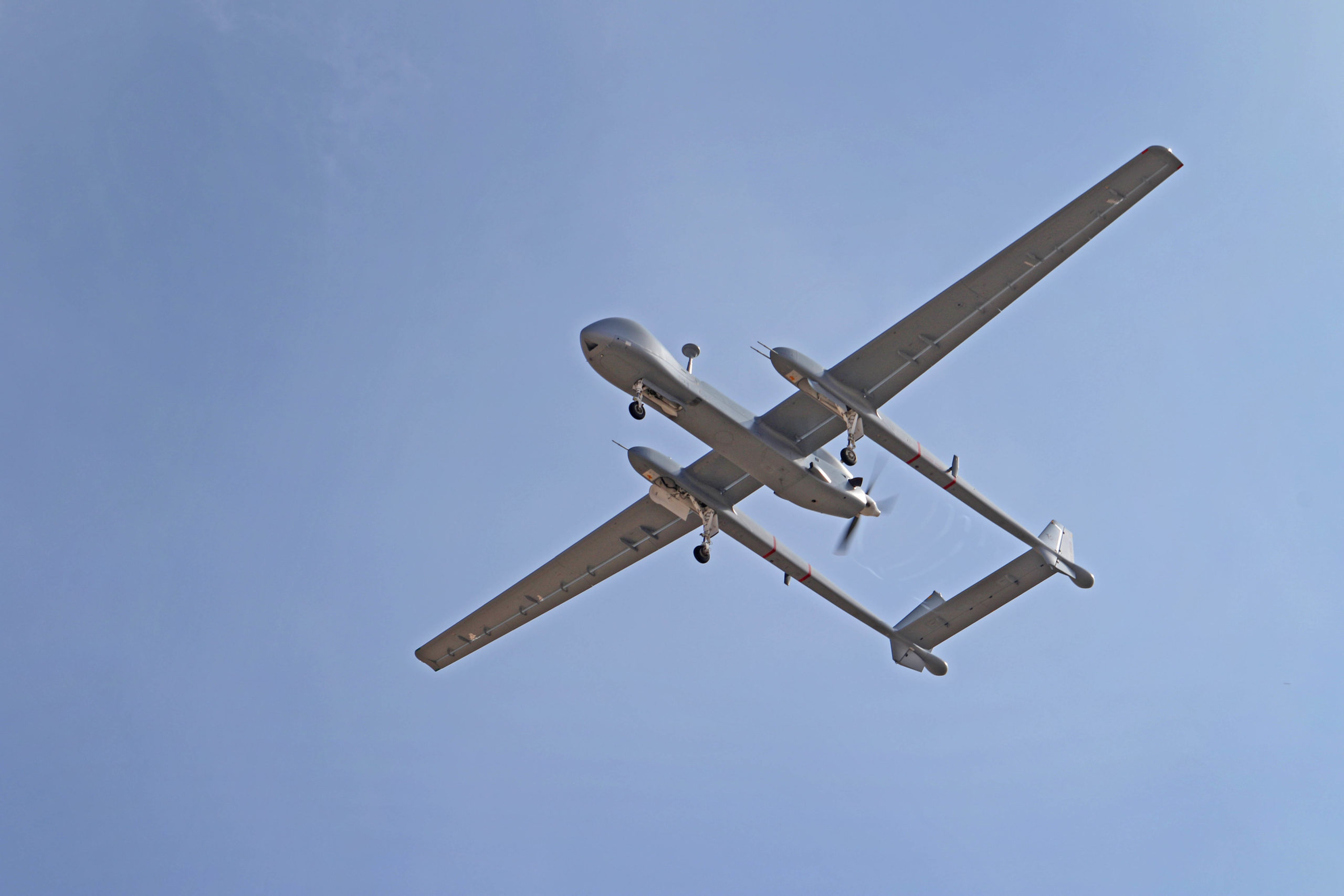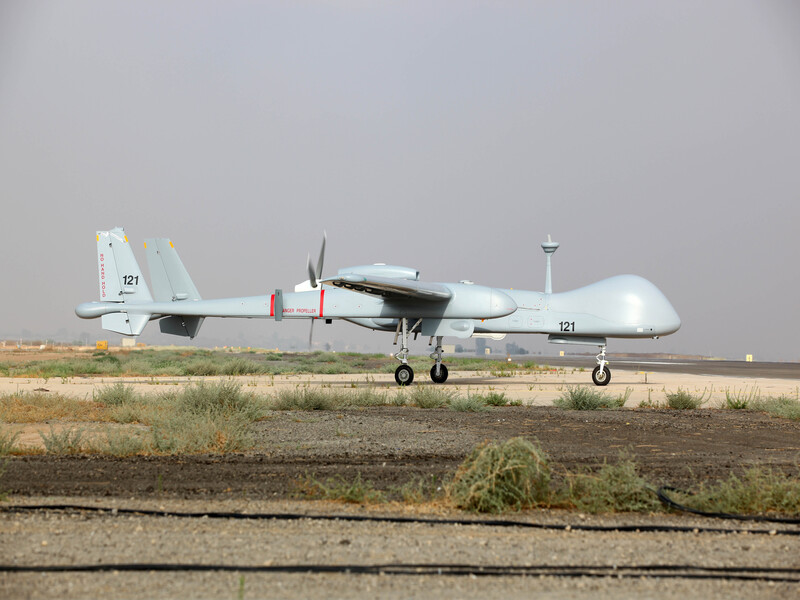 The proliferation of drones in conflict areas highlight the role of large unmanned aircraft systems (UAS) have in modern conflicts. The USA, China and Israel are currently the sole providers of large UAS, platforms that offer long mission endurance and missions versatility. One of the largest, most advanced systems is the Heron TP from Israel Aerospace Industries (IAI).
The proliferation of drones in conflict areas highlight the role of large unmanned aircraft systems (UAS) have in modern conflicts. The USA, China and Israel are currently the sole providers of large UAS, platforms that offer long mission endurance and missions versatility. One of the largest, most advanced systems is the Heron TP from Israel Aerospace Industries (IAI).
Equipped with the most advanced avionics, line of sight and satellite communications and multiple mission payloads, Heron TP climbs up to 45,000 ft, high above commercial air traffic routes, where it can operate on missions spanning over 30 hours, carrying more than 1,000 kg of payloads. The robust structural design features double boom, twin-tail design that are most suitable for such missions, offering better antennae separation, optimal coverage, and a stable platform necessary for precision signal measurements.
Israel Aerospace Industries (IAI) signed at DefExpo 2020 a strategic collaboration MOU (memorandum of understanding) with a focus on UAVs with India’s Hindustan Aeronautics Limited (HAL) and Dynamatic Technologies Limited (DTL). The MOU will reflect existing capabilities developed by IAI over the years and promote the production of Indian UAVs, in line with the Indian Government’s “Make in India” and “self-reliance” policy. The strategic partnership with the Indian corporations will allow the implementation of optimal solutions for the needs of the Indian forces based on their specific technologies and needs.
 New Mission Capabilities
New Mission Capabilities
Heron TP is well configured to carry multiple payloads in a large internal payload bay, universal payload attachments and underwing hardpoints. Such payloads include electro-optical systems, SAR and maritime search radars, COMINT and ELINT systems and persistent surveillance systems designed for operation from standoff range.
In addition to the payloads integrated into the aircraft Heron TP can also carry mission payloads in underwing pods. Such EO pods can deliver in real-time a 3D image of the ground scene, other sensors designed for persistent surveillance, provide continuous coverage of large areas, monitoring all movements over time, enabling analysts to follow objects of interests by specific parameters, such as vehicles type, shape and color, define life patterns and identify anomalies from such patterns.
A new capability supported by the Heron TP is maritime anti-submarine surveillance, integrating maritime surveillance radar, EO payload, magnetic anomaly detector (MAD) and sonobuoys that are dropped to the water and transmit sonar data to the aircraft. With this equipment the Heron can detect submarines underwater and track them at periscope depth. On such missions Herons are launched from land bases but can be controlled from ships at sea. At twice the speed of other drones, and long mission endurance, the TP can cover larger areas, deep at sea. Flying higher than other drones and using EO payloads covering extremely long range, Heron TP significantly enhances mission capabilities of maritime surveillance and ASW, in its ability to move quickly to new positions and recognize targets without descending to a lower altitude, or from stand-off range.
A Good Year for Heron TP
Operationally deployed with Israel’s Air Force (IAF) since 2010 Heron-TP performed countless missions extended farther and longer than any other manned or unmanned aerial combat system. “90 percent of our activity covers the northern theater, where we are required to provide persistent surveillance and real-time intelligence” 210th squadron leader, Lt. Colonel S. said, “Heron TP enables us to operate farther and extend our vision even longer”. In 2018 the IAF took delivery of additional Heron TPs that significantly increases the UAV fleet size and contribute to increase operational flight hours by 70%.
Germany soon become the second operator of Heron TP, following the award of €1 Billion contract to Airbus in June 2018. The contract funds operational leasing of five Heron TP drones, for a period of nine-year. The project will have a two-year set-up phase, followed by an operational phase lasting a further seven years.
“This project will provide the Bundeswehr with an even more efficient system that will better protect soldiers in a wide range of threat situations as well as the at-risk civilian population,” Jana Rosenmann, Head of Unmanned Aerial Systems at Airbus said. HERON TP will also get military certification from the German Armed Forces aviation authority in accordance with STANAG 4671 allowing the system to be used around the world.
A month after the German announcement the Indian government approved the procurement of Heron-TP platforms to augment the fleet of Heron Is operated by the Indian Air Force. Similar to the German configuration, these platforms will offer enhanced mission capabilities, addressing an urgent Indian requirement for unmanned weapon carrying platforms. The new Heron TP platform will further extend these capabilities of current Heron I, enable the Indian operators to fly missions higher, farther and with more versatile, heavier loads.

















